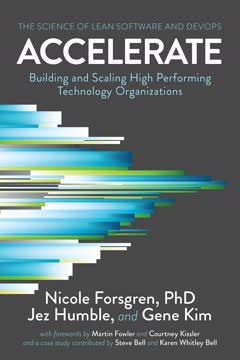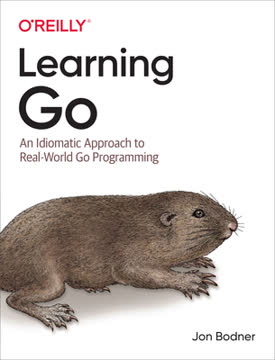つの重要なポイント
1. Kubernetes: クラウドネイティブアプリケーションの基盤
Kubernetesは、コンテナオーケストレーションプラットフォームであり、その上に構築される他のプラットフォームの基盤を形成する。
分散プリミティブ。 Kubernetesは、クラウドネイティブアプリケーションを構築するための新しい分散プリミティブのセットを導入する。これには、Pod(コンテナのグループ)、Service(ネットワーキングとロードバランシング用)、およびアプリケーションライフサイクルを管理するためのさまざまなコントローラーが含まれる。これらのプリミティブは、従来のプロセス内ビルディングブロックと比較して高い抽象化レベルを提供し、開発者がインフラストラクチャの懸念ではなくアプリケーションロジックに集中できるようにする。
宣言的アプローチ。 Kubernetesは、開発者がアプリケーションの望ましい状態を指定し、プラットフォームがその状態を維持するために継続的に作業する宣言的モデルを採用している。このアプローチはアプリケーション管理を簡素化し、自動的な修復とスケーリングを可能にする。Kubernetesの主要な概念には以下が含まれる:
- コンテナ:アプリケーションコードと依存関係をパッケージ化し、隔離されたユニット
- Pod:1つ以上のコンテナで構成される最小のデプロイ可能ユニット
- Service:Podのグループにアクセスするための安定したネットワークエンドポイント
- ラベルとアノテーション:リソースを整理し選択するためのメタデータ
- ネームスペース:リソースの隔離とマルチテナンシーのための仮想クラスター
2. 基礎パターン:コンテナ化されたアプリのビルディングブロック
完全に自動化可能なクラウドネイティブアプリケーションは、その状態を推測できるようにして、Kubernetesがアプリケーションが稼働しているかどうか、リクエストを処理する準備ができているかどうかを検出できるようにする必要がある。
予測可能な要求。 アプリケーションはリソース要件とランタイム依存関係を宣言する必要がある。これにより、Kubernetesは配置とスケーリングに関するインテリジェントな決定を下すことができる。主要な側面には以下が含まれる:
- リソースプロファイル:CPUとメモリの要求と制限を指定
- QoSクラス:Best-Effort、Burstable、Guaranteed
- Podの優先度:Podの相対的重要性を示す
宣言的デプロイ。 Kubernetesは、最小限のダウンタイムでアプリケーションを更新するためのメカニズムを提供する:
- ローリングアップデート:古いPodを新しいPodに徐々に置き換える
- ブルーグリーンデプロイメント:2つのバージョン間でトラフィックを切り替える
- カナリアリリース:新しいバージョンへのトラフィックを徐々に増やす
ヘルスプローブと管理されたライフサイクル。 アプリケーションはヘルスチェックを実装し、ライフサイクルイベントに応答する必要がある:
- リブネスプローブ:アプリケーションが稼働しているかどうかを検出
- レディネスプローブ:アプリケーションがトラフィックを処理する準備ができているかどうかを判断
- ライフサイクルフック:開始および停止イベントに応答
3. 行動パターン:Pod管理とサービスディスカバリ
シングルトンサービスパターンは、アプリケーションのインスタンスが一度に1つだけアクティブでありながら、高可用性を確保する。
ジョブ管理。 Kubernetesは、さまざまなタイプのワークロードを管理するための抽象化を提供する:
- バッチジョブ:有限で完了可能なタスクを実行
- 定期ジョブ(CronJob):スケジュールされた定期的なタスクを実行
- デーモンサービス:各ノードでシステムレベルのサービスを実行
ステートフルサービス。 Kubernetesは、安定したネットワークIDと永続ストレージを必要とするアプリケーションを管理するためのStatefulSetを提供する:
- 順序付けられたデプロイとスケーリング
- 安定したネットワークID
- Podごとの永続ストレージ
サービスディスカバリ。 Kubernetesは、サービスディスカバリのための複数のメカニズムを提供する:
- ClusterIPサービス:内部通信用
- NodePortおよびLoadBalancerサービス:外部アクセス用
- Ingress:HTTPベースのルーティングとロードバランシング
4. 構造パターン:Pod内のコンテナの整理
サイドカーコンテナは、既存のコンテナの機能を変更せずに拡張および強化する。
マルチコンテナPod。 Kubernetesは、複数のコンテナを1つのPodにグループ化することを可能にし、さまざまなパターンを実現する:
- Initコンテナ:メインコンテナが開始する前の初期化タスク
- サイドカー:メインコンテナに機能を追加
- アダプター:異種アプリケーションの出力を標準化
- アンバサダー:外部サービスとの通信をプロキシ
これらのパターンは、関心の分離、モジュール性、およびアプリケーション設計における再利用性を促進する。開発者は、Podの抽象化によって提供される共有コンテキストとリソースを活用しながら、単純な単一目的のコンテナから複雑なアプリケーションを構成することができる。
5. 構成パターン:さまざまな環境にアプリケーションを適応させる
ConfigMapとSecretは、Kubernetes APIで簡単に管理できる専用のリソースオブジェクトに構成情報を保存することを可能にする。
外部化された構成。 Kubernetesは、アプリケーション構成を管理するためのいくつかのメカニズムを提供する:
- 環境変数:シンプルなキーと値のペア
- ConfigMap:非機密の構成データ
- Secret:機密情報(例:パスワード、APIキー)
不変の構成。 環境間の一貫性を確保するために、構成を不変のコンテナイメージにパッケージ化できる:
- 構成コンテナ:構成データを保存する専用のイメージ
- Initコンテナ:共有ボリュームに構成をコピー
構成テンプレート。 環境間でわずかに異なる複雑な構成のために:
- テンプレート処理:Gomplateなどのツールを使用して構成ファイルを生成
- Initコンテナ:Podの初期化中にテンプレートを処理
これらのパターンは、開発者が構成をアプリケーションコードから分離し、移植性を促進し、環境固有の問題のリスクを軽減することを可能にする。
6. 高度なパターン:Kubernetesの拡張と複雑なワークロードの管理
オペレーターは、Kubernetesと他の何かの2つのドメインを理解するKubernetesコントローラーである。両方の領域の知識を組み合わせることで、通常は両方の領域を理解する人間のオペレーターが必要とするタスクを自動化できる。
コントローラーとオペレーター。 Kubernetesは、複雑なアプリケーションを管理するために拡張できる:
- コントローラー:リソースの変更に基づいてカスタム動作を実装
- オペレーター:ドメイン固有の知識をエンコードし、複雑な操作を自動化
- カスタムリソース定義(CRD):新しいリソースタイプを定義
フレームワークとツール。 いくつかのプロジェクトは、コントローラーとオペレーターの開発を支援する:
- オペレーターフレームワーク:Goベースのオペレーターを構築するためのフレームワーク
- Kubebuilder:オペレータープロジェクトのスキャフォールディングと管理
- Metacontroller:任意の言語でオペレーターを実装
これらのパターンは、開発者がKubernetesの機能を拡張し、クラスター内で複雑なアプリケーション固有の操作を自動化することを可能にする。
7. スケーリングとビルディング:弾力的なアプリケーションとクラスター内のイメージ作成
Kubernetesのオートスケーリングにより、固定された容量ではなく、異なる負荷を処理するために十分な容量を確保する可変のアプリケーション容量を定義できる。
弾力的なスケール。 Kubernetesは、アプリケーションをスケーリングするための複数のメカニズムを提供する:
- 水平Podオートスケーリング(HPA):Podレプリカの数を調整
- 垂直Podオートスケーリング(VPA):リソース要求と制限を変更
- クラスターオートスケーリング:リソース需要に基づいてノードを追加または削除
イメージビルディング。 Kubernetesは、クラスター内でコンテナイメージをビルドするために使用できる:
- OpenShift Build:さまざまな戦略を使用してイメージをビルドする統合システム
- Knative Build:Kubernetesネイティブのビルディングフレームワーク
- Daemonlessビルド:img、buildah、Kanikoなどのルートレスイメージ作成ツール
これらのパターンは、開発者が弾力的で自己調整型のアプリケーションを作成し、Kubernetesのスケジューリングとリソース管理機能を活用してイメージビルディングプロセスを合理化することを可能にする。
最終更新日:
FAQ
What's Kubernetes Patterns about?
- Focus on Cloud-Native Applications: Kubernetes Patterns by Bilgin Ibryam and Roland Huß is a guide to designing cloud-native applications using Kubernetes, emphasizing scalable, resilient, and manageable applications.
- Reusable Design Elements: The book highlights reusable elements for application design, offering practical solutions to common deployment challenges on Kubernetes.
- Real-World Use Cases: It draws from real-world experiences to illustrate effective application of patterns, making it valuable for both new and experienced Kubernetes users.
Why should I read Kubernetes Patterns?
- Enhance Kubernetes Skills: Ideal for developers aiming to deepen their understanding of Kubernetes and improve application design skills with best practices and proven patterns.
- Learn from Experts: Written by experienced practitioners, it encapsulates lessons from various projects, providing readers with extensive knowledge in cloud-native application design.
- Practical Guidance: The patterns are actionable and applicable to real-world scenarios, serving as a practical guide for cloud-native development.
What are the key takeaways of Kubernetes Patterns?
- Understanding Kubernetes Concepts: Covers essential concepts like Pods, Services, and Deployments, providing a solid foundation for building robust applications.
- Design Patterns for Apps: Introduces patterns like Predictable Demands and Health Probes, crucial for creating scalable and maintainable applications.
- Advanced Topics: Delves into advanced patterns like Operators and Controllers, essential for extending Kubernetes functionality and managing complex applications.
What are the foundational patterns discussed in Kubernetes Patterns?
- Predictable Demands: Emphasizes declaring resource requirements for containers to help Kubernetes make informed scheduling decisions.
- Declarative Deployment: Focuses on deployment strategies like Rolling Updates and Blue-Green Deployments for managing application updates with minimal downtime.
- Health Probes: Discusses implementing liveness and readiness probes for monitoring application health, ensuring only healthy instances serve traffic.
How does Kubernetes Patterns define a Job and its purpose?
- Batch Job Definition: A Job manages the execution of Pods until a specified number successfully terminate, designed for finite tasks needing reliable completion.
- Reliability and Scalability: Ensures tasks are executed to completion by automatically restarting Pods as needed, suitable for data processing or batch jobs.
- Parallel Execution: Jobs can run multiple Pods in parallel, allowing efficient processing of tasks divided into smaller, independent units.
What is the significance of the DaemonSet pattern in Kubernetes Patterns?
- Infrastructure-Focused Pods: Deploys Pods on every node or specific subsets, providing essential infrastructure services like logging or monitoring.
- Automatic Management: Manages the lifecycle of Pods automatically, simplifying infrastructure service management in a Kubernetes cluster.
- Node-Specific Operations: Useful for applications needing node-specific operations, such as accessing local storage or monitoring node health.
How does Kubernetes Patterns explain the Singleton Service pattern?
- Single Active Instance: Ensures only one instance of a service is active, crucial for tasks like scheduled jobs or message processing.
- High Availability: Maintains a single active instance while emphasizing high availability using controllers like StatefulSets or ReplicaSets.
- Service Discovery: Uses headless Services for stable network identities, ensuring consistent access to the singleton service.
What are the advanced patterns covered in Kubernetes Patterns?
- Operators: Extends Kubernetes functionality by managing complex applications through custom controllers, automating deployment and scaling.
- Elastic Scale: Discusses horizontal and vertical scaling strategies, using features like Horizontal Pod Autoscaling for dynamic resource adjustment.
- Image Builder: Focuses on creating container images within the Kubernetes cluster, enhancing efficiency and reducing complexity.
What is the Downward API in Kubernetes Patterns?
- Metadata Injection: Allows Kubernetes to inject Pod metadata into applications as environment variables or files, promoting self-awareness.
- Dynamic and Static Data: Provides dynamic data like Pod IP and static data like resource limits, crucial for logging and monitoring.
- Kubernetes-Agnostic Applications: Enables applications to remain agnostic to Kubernetes, promoting portability and reusability.
How does the Init Container pattern work in Kubernetes Patterns?
- Separation of Concerns: Allows initialization tasks to be separated from main application containers, handling tasks like setting up permissions independently.
- Sequential Execution: Init Containers run in sequence, ensuring each completes before the next starts, guaranteeing readiness for the main application.
- Resource Sharing: Shares network namespace and storage volumes with application containers, simplifying environment preparation.
What is the Sidecar pattern in Kubernetes Patterns?
- Enhancing Functionality: Involves adding a secondary container to a Pod to enhance or extend the primary container's functionality.
- Common Use Cases: Used for logging, monitoring, or proxying requests, allowing the main application to focus on core functionality.
- Collaboration Between Containers: Facilitates resource sharing and communication within the same Pod, leading to efficient applications.
How does Horizontal Pod Autoscaling work in Kubernetes Patterns?
- Dynamic Scaling: Automatically adjusts Pod replicas based on CPU utilization or other metrics, ensuring applications handle varying loads.
- Configuration Requirements: Requires defined resource requests and a running metrics server for informed scaling decisions.
- Continuous Monitoring: Monitors specified metrics and adjusts replicas, maintaining optimal resource utilization and performance.
レビュー
本書『Kubernetes Patterns』は、読者から主に好意的な評価を受けており、その魅力的な内容、明確な構成、実践的な例が称賛されている。多くの読者は、Kubernetesの概念やベストプラクティスを理解するために本書が有益であると感じている。一部のレビュアーは、本書のパターンの説明方法を高く評価しているが、他のレビュアーは特定の「パターン」が基本的なKubernetesの機能に過ぎないと感じている。本書は、Kubernetesの知識を深めたい開発者やシステム管理者に推奨されるが、経験豊富な実務者にはそれほど役立たないかもしれない。全体として、クラウドネイティブアプリケーションを構築するための有用なリソースと見なされている。
Similar Books














